Thank You Letter Template After Job Interview
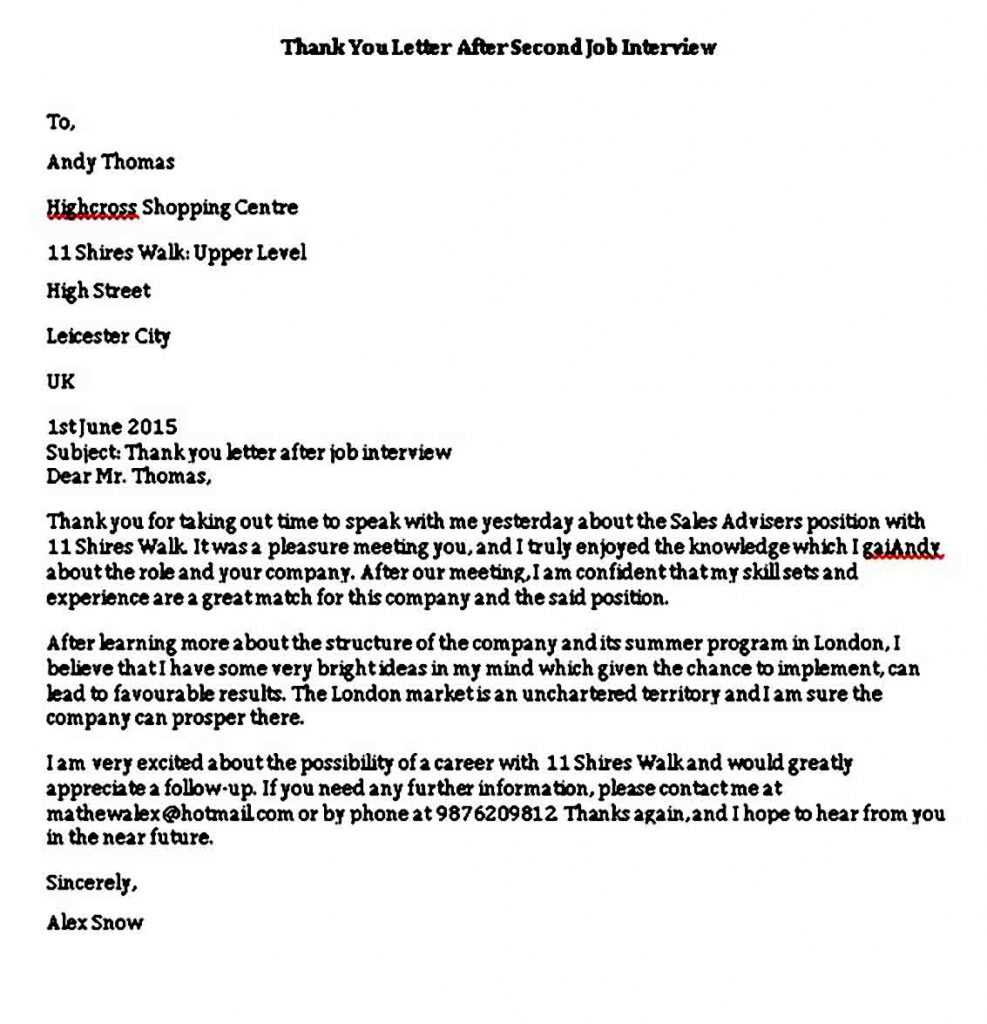
Following a professional meeting, it’s essential to convey appreciation for the opportunity provided. A well-crafted note can strengthen your connection with the potential employer and reflect your professionalism.
Crafting the right message involves more than just saying “thank you.” It’s about showcasing your interest, reinforcing your qualifications, and leaving a lasting impression. The message should be brief, yet meaningful, ensuring the recipient feels valued.
In this guide, we will explore how to compose a meaningful response, the appropriate timing, and the common pitfalls to avoid. This approach can increase your chances of standing out positively in a competitive hiring process.
Importance of Sending a Thank You Letter
Following a professional conversation, expressing gratitude serves as a key step in fostering a strong relationship with the hiring party. It reflects your respect for their time and reaffirms your interest in the position, creating a positive final impression.
Sending a thoughtful note demonstrates your attention to detail and can distinguish you from other candidates. It is an opportunity to reiterate key points discussed during the meeting and further highlight your suitability for the role.
Additionally, such a gesture can showcase your communication skills, an essential attribute in most professional environments. It provides an excellent platform to reinforce your enthusiasm and leave the potential employer with a favorable impression.
How to Craft the Perfect Message
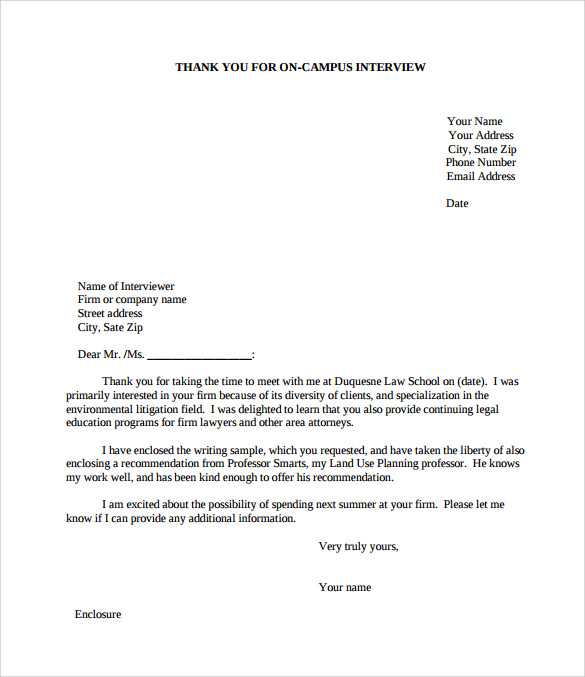
Creating an impactful note requires careful thought and consideration. It should be concise, yet meaningful, highlighting the most important aspects of your discussion. The message should reflect both your professionalism and enthusiasm for the role.
Start by addressing the individual by name and express your appreciation for their time. Then, mention specific details from the meeting that resonated with you, demonstrating your attentiveness. Finally, briefly reiterate your qualifications and how they align with the position, leaving a lasting impression of your suitability for the job.
Key Elements of a Professional Letter
Crafting a well-structured message involves focusing on several essential components that convey your appreciation while maintaining a professional tone. Each section should contribute to a polished, impactful communication that aligns with your objectives.
Clarity and conciseness are paramount. The message should be brief yet convey all necessary information without ambiguity. Personalization also plays a crucial role–address the recipient directly and reference specific points discussed during the meeting.
Gratitude and enthusiasm should shine through, but in a way that feels sincere and genuine. Always express how much you value the opportunity and briefly reaffirm your interest in the position and how your qualifications align with the employer’s needs.
When to Send Your Thank You Note
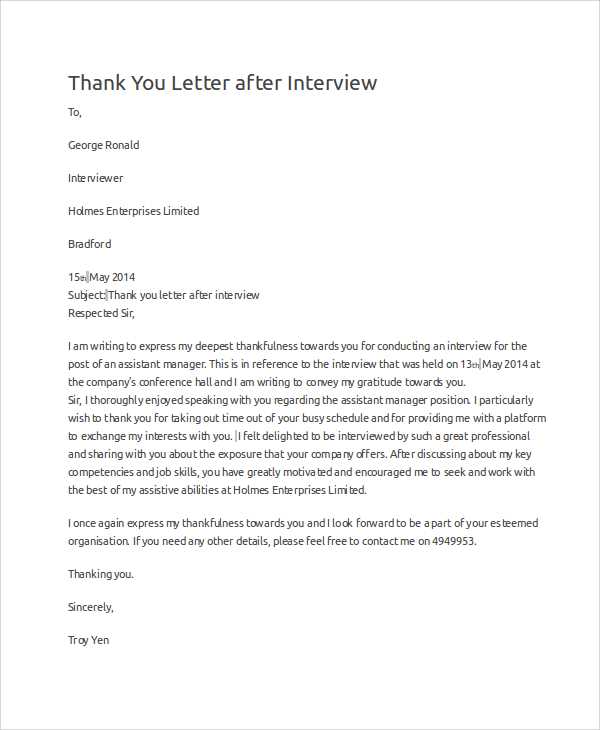
Timing plays a critical role in making a positive impact with your message. Sending it too late may diminish its effectiveness, while sending it too early could come across as rushed. It’s essential to find the right moment to strike a balance between promptness and thoughtfulness.
Ideally, the note should be sent within 24 hours of the conversation. This ensures that your communication is fresh in the recipient’s mind, reinforcing the impression you’ve made. Sending it promptly shows enthusiasm and respect for the opportunity without appearing overzealous.
Common Mistakes to Avoid in Letters
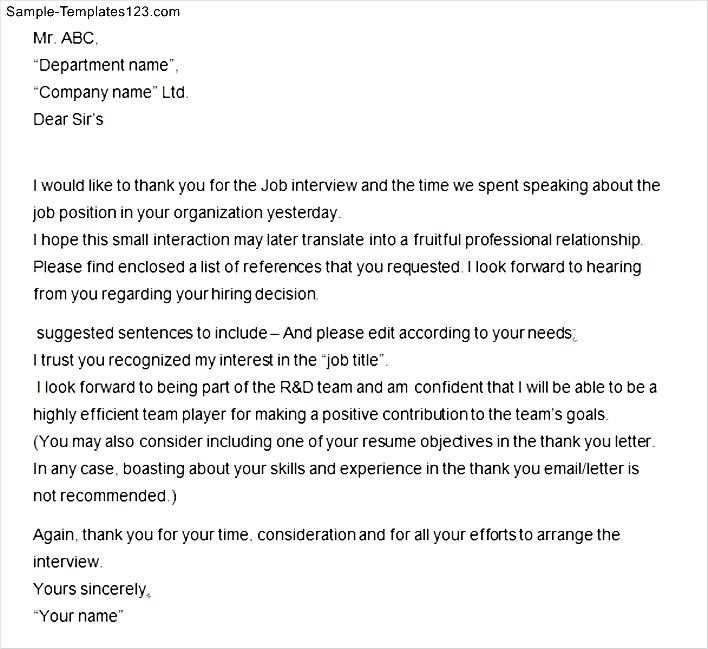
When composing a message following a professional meeting, it’s easy to make small errors that could harm the impression you’ve made. Recognizing these common mistakes and understanding how to avoid them is key to crafting a successful communication.
| Mistake | How to Avoid It |
|---|---|
| Being too casual | Maintain a formal tone, using proper etiquette and language suitable for a professional setting. |
| Repetition of information | Focus on key highlights rather than rehashing everything discussed during the meeting. |
| Failure to personalize | Reference specific aspects of the conversation to show you were engaged and attentive. |
| Misspellings and grammatical errors | Proofread your message carefully before sending to ensure professionalism and attention to detail. |
| Being too brief or vague | Be concise, but ensure your message covers key points and communicates your genuine interest. |
Personalizing Your Message for Impact
To truly stand out, your communication must be tailored to reflect the unique aspects of the conversation you had. Personalizing your message not only shows attentiveness but also reinforces your genuine interest in the role.
Why Personalization Matters
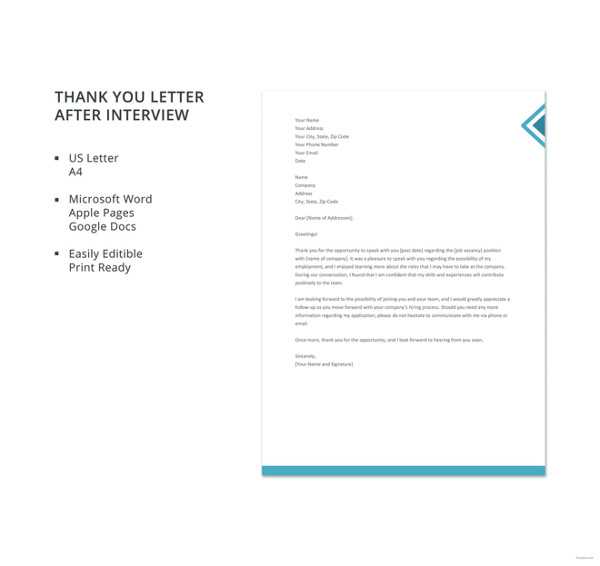
Adding specific details from the conversation can leave a strong impression. This shows the recipient that you were fully engaged, making your message more memorable.
How to Personalize Effectively
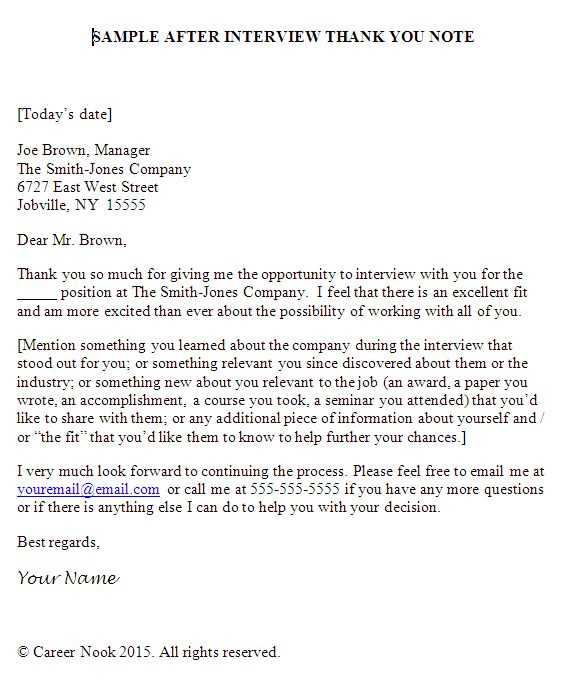
- Reference key points discussed during the meeting to demonstrate your attention to detail.
- Express enthusiasm about particular aspects of the role or company that resonated with you.
- Include how your skills align with the company’s needs, reinforcing your suitability for the position.
- Be sincere and authentic in your tone, ensuring the message feels personal and not formulaic.